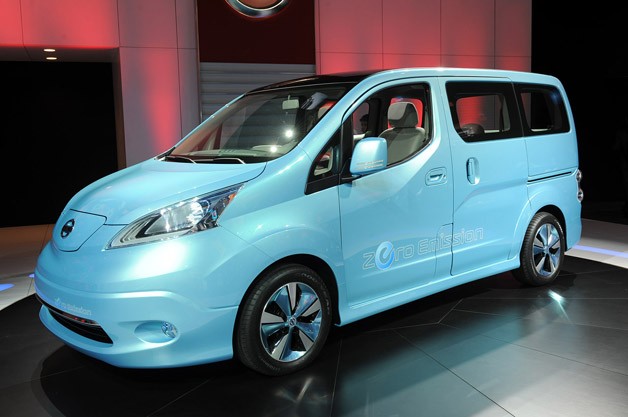
Most of the hybrids and electric cars you see today or either the small models that hardly contain three people or they are massive, like the ones that Elon Musk is pedalling at the moment. But the Nissan e-NV200 Combi is one of those cars that is bridging the gap between small and large. It is the world’s first 7 seat MPV that is all electric. The idea for this model is to cater for shuttle services as well as appeal to large families. In this respect, the NV200 is catering for quite a niche market, so let’s put it to the test.
Nissan was one of the first firms with a mainstream EV, and this model, based on the NV200 van, is pretty much cut from the same cloth as the Nissan Leaf. As far as its power is concerned, the electric motor has a decent 107 bhp, as well as 187lb ft of torque, meaning that its modest power lends itself well to the family contingent. And while the NV200 model is considerably bigger than the Nissan Leaf, it has the same 24wHk battery that the leaf has. So if you’ve got a small family but opted for this car, you may find yourself heading to a used auto service to trade it in. And as the somewhat a limited battery power is felt at higher speeds, despite the larger front than the Leaf, the official range for the vehicle is only 106 miles.
Despite its somewhat limited range, it comes with two different charging options in both versions of the car, the Combi and the Tekna. The two charging options, the Rapid, and Rapid Plus, and while the Rapid version can take 4 hours to charge, the Rapid Plus version has a high speed 6.6Kw AC option for charging onboard. There isn’t much difference between the Combi and the Tekna, save for the 15-inch alloy wheels, as well as climate control, and the usual features like Bluetooth and so forth. The benefits of both models are that it has the Nissan Carwings Infotainment System, which includes satellite navigation, as well as a DAB radio.
The one thing you notice when taking it out for a spin is that it’s so quiet, as well as it being without a diesel engine, and no manual gearbox. This means that negotiating heavy traffic is easy work. And while the van is able to keep up with other high-speed traffic, the top speed of 76 miles per hour can be a bit of a problem. It’s also important to remember that other factors will drain the battery. The one major issue is that if you are driving in hot weather, the climate control will put a lot of pressure on the battery.
But, as far as a family car is concerned, this is certainly one of the front-runners in the category of “driving five or more kids to the game”, but with its limited capabilities, it appears more useful in shuttling people back and forth, rather than long, strenuous journeys.

